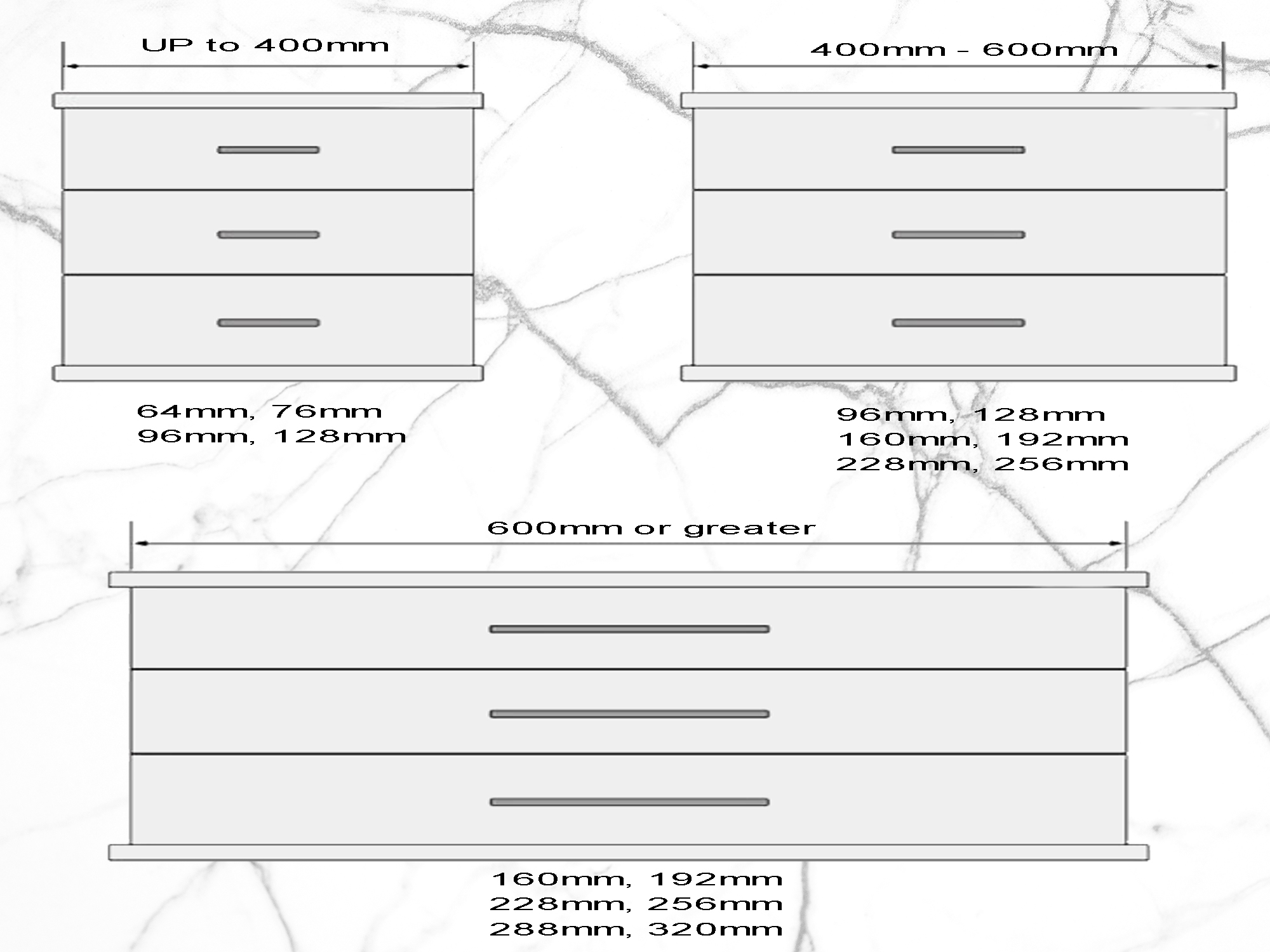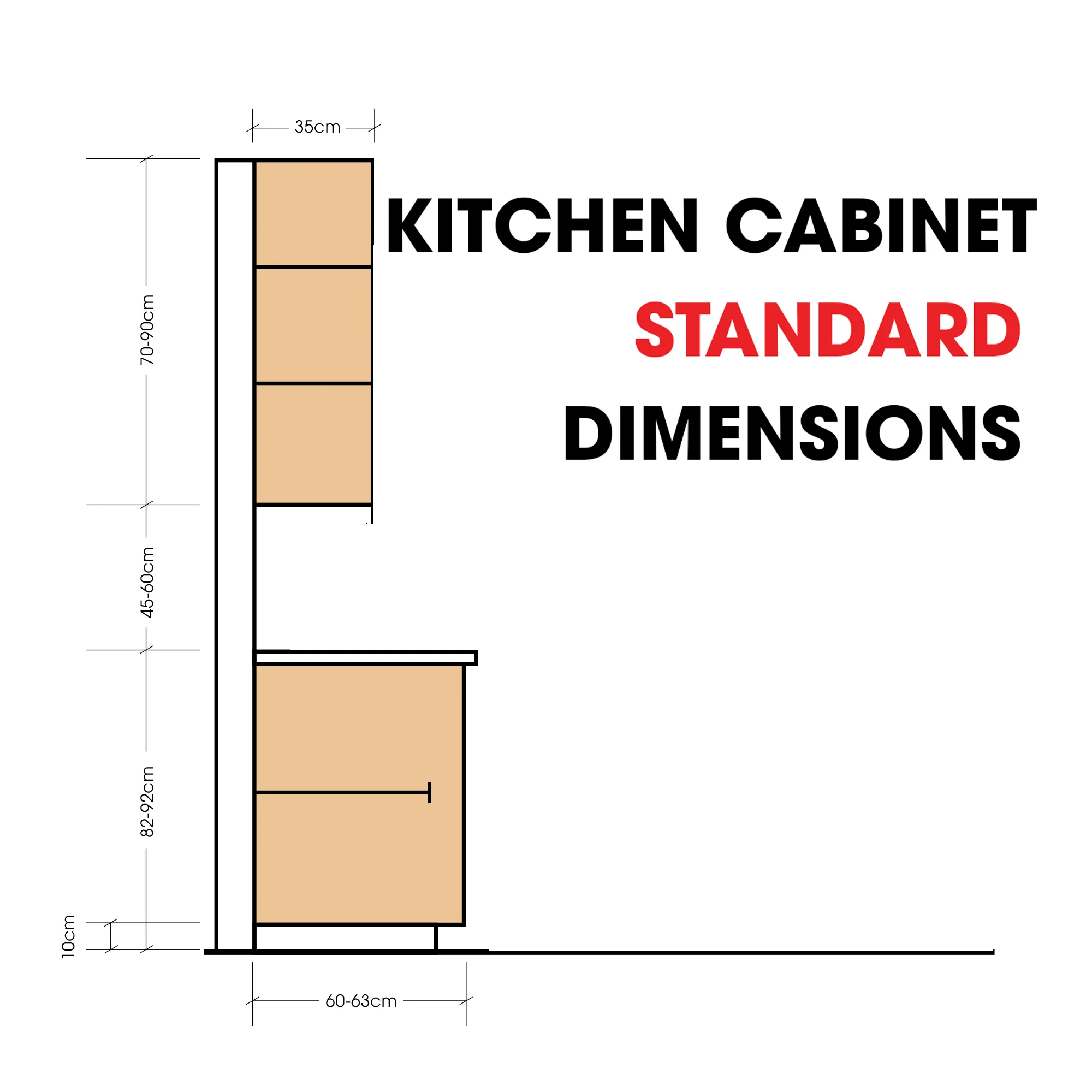Standard Kitchen Cabinet Handle Sizes

Choosing the right kitchen cabinet handles can significantly impact the overall look and feel of your kitchen. Understanding standard handle sizes and the factors that influence their selection is crucial for achieving a cohesive and functional design. This guide will provide you with a comprehensive overview of standard kitchen cabinet handle sizes and the key considerations for selecting the perfect handles for your kitchen.
Common Kitchen Cabinet Handle Types and Their Standard Sizes
Kitchen cabinet handles come in various styles and sizes, each offering a distinct aesthetic and functionality. Understanding the common types and their standard sizes will help you make an informed decision based on your preferences and kitchen design.
- Bar Pulls: Bar pulls are long, rectangular handles that are typically mounted horizontally on cabinet doors and drawers. They are available in a wide range of lengths, with standard sizes ranging from 3 inches to 12 inches. Common bar pull sizes include 3 inches, 4 inches, 6 inches, 8 inches, 10 inches, and 12 inches.
- Cup Pulls: Cup pulls, also known as “U-shaped” pulls, are characterized by their curved design and typically feature a central knob or bar. Standard sizes for cup pulls range from 3 inches to 6 inches. Common cup pull sizes include 3 inches, 4 inches, and 5 inches.
- Knobs: Knobs are round or square handles that are typically mounted on cabinet doors and drawers. They are available in various sizes and styles, with standard diameters ranging from 1 inch to 2 inches. Common knob sizes include 1 inch, 1.25 inches, 1.5 inches, and 2 inches.
Factors Influencing Kitchen Cabinet Handle Size Selection, Standard kitchen cabinet handle size
The size of your kitchen cabinet handles is an important consideration that will affect the overall aesthetics and functionality of your kitchen. Several factors influence handle size selection, including cabinet style, drawer depth, and personal preference.
- Cabinet Style: The style of your cabinets will play a significant role in determining the appropriate handle size. For example, traditional cabinets may pair well with larger, more ornate handles, while modern cabinets may benefit from minimalist, sleek handles.
- Drawer Depth: The depth of your drawers is another crucial factor to consider. Handles that are too large for shallow drawers may be difficult to grasp, while handles that are too small for deep drawers may be uncomfortable to use.
- Personal Preference: Ultimately, the size of your kitchen cabinet handles should reflect your personal style and preferences. Consider the overall design of your kitchen and choose handles that complement the existing elements.
Choosing the Right Handle Size: Standard Kitchen Cabinet Handle Size

Selecting the appropriate handle size for your kitchen cabinets is crucial for both functionality and aesthetics. It’s about finding a balance between ease of use and visual appeal. The right handle size can make opening and closing cabinets a breeze, while also enhancing the overall design of your kitchen.
Handle Sizes for Different Cabinet Types
The ideal handle size will vary depending on the type of cabinet you’re working with. Here’s a general guideline:
| Cabinet Type | Recommended Handle Length |
|---|---|
| Base Cabinets | 6-12 inches |
| Upper Cabinets | 4-8 inches |
| Drawers | 3-6 inches |
Ergonomic Considerations for Handle Placement and Grip
Proper handle placement and grip are essential for comfortable and efficient use. Here are some ergonomic considerations:
- Handle Height: Handles should be positioned at a height that allows for a comfortable grip without straining. For base cabinets, aim for a handle height of 30-36 inches from the floor. For upper cabinets, position handles between 54-60 inches from the floor.
- Handle Spacing: Ensure adequate spacing between handles to allow for easy access and prevent bumping into adjacent cabinets.
- Handle Shape: Consider the shape and curvature of the handle to ensure a comfortable grip. Handles with a slight curve or a rounded shape tend to be more ergonomic.
Pros and Cons of Different Handle Sizes
The size of your kitchen and the style of your cabinets can influence the best handle size.
- Large Kitchens: Larger kitchens often benefit from larger handles that create a bold statement. Long, linear handles can visually elongate the space, while oversized knobs can add a touch of grandeur.
- Small Kitchens: Smaller kitchens may benefit from smaller handles that maintain a sense of spaciousness. Sleek, minimalist handles can help create a clean and uncluttered look.
- Traditional Styles: Traditional kitchens often feature larger, more ornate handles. Consider ornate knobs or pulls with intricate details for a classic touch.
- Modern Styles: Modern kitchens tend to favor sleek and minimalist handles. Consider bar pulls, cup pulls, or small, geometric knobs for a contemporary look.
Handle Installation and Considerations

Installing kitchen cabinet handles can be a rewarding DIY project, adding a personalized touch to your kitchen. However, choosing the right handles and understanding the installation process are essential for a successful outcome.
Hardware and Tools
The tools and hardware required for handle installation vary depending on the type of handle and your cabinet material. Here are the essential items you will need:
- Screwdriver: A Phillips head screwdriver is typically required for most cabinet handles, but a flathead screwdriver may be necessary for some types.
- Drill: A drill with a pilot bit and appropriate drill bits for the screw size is necessary for drilling holes for handles.
- Measuring Tape: Accurate measurements are crucial for consistent handle placement.
- Level: A level ensures your handles are installed straight and symmetrical.
- Pencil: A pencil is used for marking the handle placement on the cabinet doors or drawers.
- Cabinet Handles: Choose handles that complement your kitchen style and are compatible with your cabinet material.
- Screws: Make sure the screws provided with the handles are the appropriate length for your cabinet thickness.
Handle Installation Steps
Follow these steps to install kitchen cabinet handles:
- Determine the handle placement: Measure the width of your cabinet doors or drawers and decide where you want the handles to be positioned. Most handles are installed in the center, but you can adjust the placement based on your preference.
- Mark the handle location: Use a pencil to mark the handle location on the cabinet doors or drawers. Ensure the marks are level and symmetrical.
- Pre-drill holes (if necessary): For some cabinet materials, such as hardwood, it is recommended to pre-drill pilot holes to prevent splitting. Use a drill bit slightly smaller than the screw diameter.
- Attach the handles: Align the handle with the marked location and secure it with the screws provided. Make sure the screws are tightened securely, but avoid overtightening, which can damage the cabinet material.
Considerations Before Installation
Before you begin installing your cabinet handles, consider the following factors:
- Cabinet Material: Different cabinet materials require different installation techniques. For example, solid wood cabinets may need pre-drilled pilot holes, while particleboard cabinets might not.
- Handle Style: Consider the style of your handles and how they will complement the overall kitchen design. You can choose from various styles, such as modern, traditional, or rustic.
- Handle Size: Ensure the handles are the right size for your cabinet doors and drawers. Too small handles may be difficult to grip, while too large handles may be awkward or obstruct opening and closing.
- Handle Finish: Choose a handle finish that matches the other hardware in your kitchen. Popular finishes include brushed nickel, chrome, brass, and oil-rubbed bronze.
- Handle Type: Decide between knob handles, bar handles, or pull handles based on your preferences and the style of your kitchen.
- Handle Placement: Consider the handle placement in relation to other features, such as appliances, countertops, and sinks. Ensure the handles are positioned in a way that is comfortable and easy to use.
While standard kitchen cabinet handle sizes typically range from 3 to 6 inches, you might want to consider a slightly smaller size for your farmhouse bathroom wall cabinet. This can create a more delicate and charming aesthetic, perfectly complementing the rustic charm of a farmhouse bathroom.
Remember, the key is to choose handles that feel comfortable to grip and enhance the overall style of your space.
You know those standard kitchen cabinet handle sizes? They’re pretty much the same across the board, but you can get creative with them. If you’re looking for a more unique look, consider using handles from salvage bathroom vanity cabinets – they can add a vintage charm that’s hard to resist.
And hey, maybe you’ll even find some awesome handles that are a little bit different from the usual suspects, adding that extra touch of personality to your kitchen.
